Grand monuments on the streets, vibrant and busy markets offering an array of products, and Christmas festivities in the air make Aruna Rathod want to stay back just another day in Barcelona
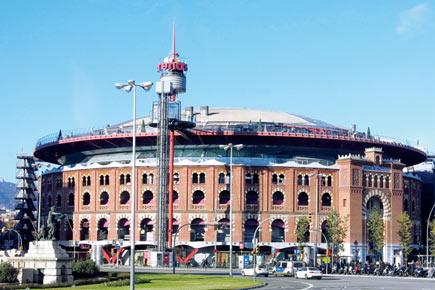
Barcelona, Spain, Travel special, Aruna Rathod, Christmas festivities, Sagrada Familia, tapas bars, sangria, Casa Batllu00c3u0083u00c2u00b3, architect Antoni Gaudi, La Boqueria market, Arenas de Barcelona
Barcelona
Best time to visit: May-June
You need: 4 days
ADVERTISEMENT
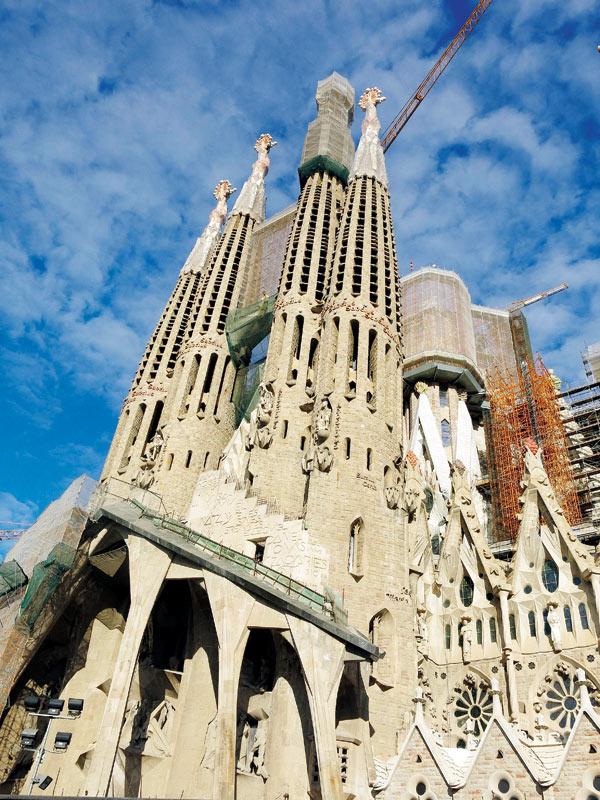
The Sagrada Familia is expected to have 18 towers once work on the building is completed
If capital Madrid is laidback, Barcelona buzzes with energy. The 600 km in three hours ride on the Renfe Express from Madrid to Barcelona Sants railway station sets the tempo for an awesome, high-voltage weekend in the Spanish city on the Mediterranean coast. After settling down and spotting the famous spires of the Sagrada Familia, the church designed by Antonio Gaudi, in the far off horizon against the blue sky, I head for a quick lunch. Sea food is a must have in Barcelona, so I settle for the fried squid rings, salad and fries. Fast, fresh and delicious!
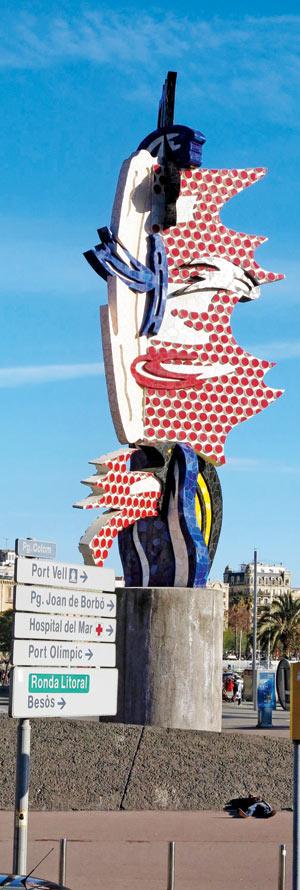
Contemporary installations like these can be found on the streets of Barcelona
As I head out into the city, it’s a toss-up between the lively waterfront and the historical quarters. I settle on the waterfront since the weather is pleasant. Barcelona has a beautiful coastal stretch, divided into various areas — right from the secluded Marabella nude beach at one end to the long stretch for families, ending with a lively stretch of sand at Barcelonetta, the city’s party destination. With shopping malls, pubs, yachts, surfing and boat rides, the oldest settlement of fishing villages is today a dining-out and nightlife district.
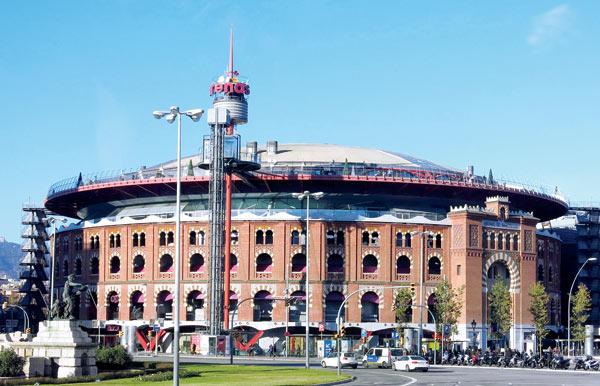
The Arenas de Barcelona is a former bullring converted into a recreational complex with a large roof terrace
Street aesthetics
At every stop on the street, I marvel at the street architecture — which is a conscious effort on the part of the city’s authorities to infuse aesthetics in the beautiful city. A mammoth metallic fish is visible from a distance. I find that this fish sculpture, known as Peix in Catalan and placed in Port Olimpic at the base of a large skyscraper, was built by renowned architect Frank O Gehry for the 1992 Summer Olympics in the city. Barcelona is a city with a wonderful mix of contemporary and historical structures. One of them is the 197-feet landmark on the waterfront — the Christopher Columbus Square — a monument built in 1888 in honour of the renowned explorer. Columbus is perched at the top of this towering structure, overseeing the city’s busiest street — the La Ramblas.

Dive into one of the tapas bars for a glass of sangria and snacks. Pics/Aruna Rathod
Market watch
I stroll through La Rambla, the Mecca of Barcelona’s street life. A lively three kilometre walk, it has tiny stores that sell souvenirs, colourful flowers, T-shirts and a hundred other assortments, which attract thousands of visitors every hour, every single day, who themselves become a vibrant community sharing the excitement and energy of the Spanish city. While the staid traveller in me is content with the La Rambla experience during daytime, I hear the stretch turns into a wicked, notorious, nightlife district after the sun goes down.
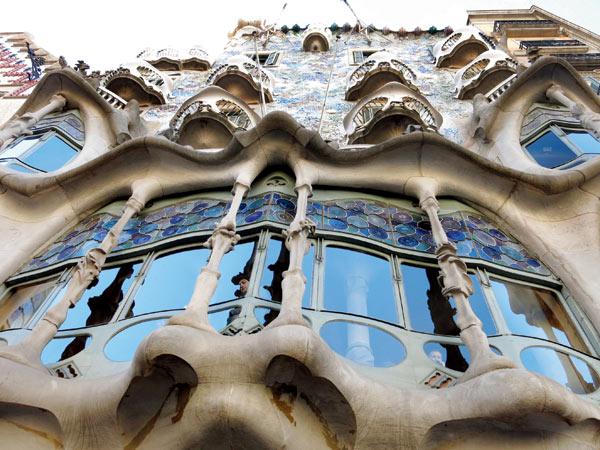
Casa Batlló is a renowned building located in the centre of Barcelona and is one of architect Antoni Gaudí's masterpieces
Bang in the middle of La Rambla is the La Boqueria market, a must-visit destination in Barcelona. There is an amazing display of sea food, neatly and artistically arranged — right from lobsters, crabs, prawns, mussels, oysters, scallops to fish fillets and even salted fish. Some vendors even have the prized Barnacles!
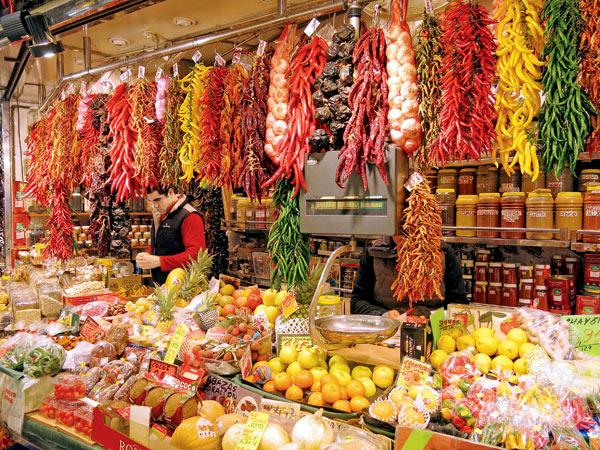
Colourful offerings at the La Boqueria market
The vegetable market is vividly colourful with an amazing, fresh range of local produce. And then there are the tempting chocolate stalls. The chocolate balls are good for complimentary sampling, but at 55 euros a kilo, it’s a bit steep.
The Boqueria market is the ultimate tourist magnet. Years ago, it was a travelling market, placed in the Ramblas of Barcelona. La Rambla acquired growing importance as a pedestrian lane, and the market was set in the best place to attract large numbers of passers-by and local inhabitants.
In Catalonia, towns and cities have been founded around markets and the same rings true for La Boqueria. It originated as an open-air market, in front of one of the gates of the old city wall (Pla de la Boqueria) where fruit and vegetable traders from local towns and farms near by would sell their products. The spaces inside the city at that time were too small to establish a big market of the current Boqueria kind and it was necessary to set them outside the walls.
Now the market has a cookery school too, where classroom courses combine theory and practice. Chefs and sommeliers act as teachers and talk about the variety and origin of products, cooking techniques, preparation of conservation, adding simple or sophisticated menus, culinary tradition and innovation. You could easily spend a day here.
Festivities galore
Next is a visit to that most photographed monument of Barcelona — the Sagrada Familia. Teeming with tourists from all over the world, one cannot help but marvel at this structure with its tall towering spires with grooves. Architect Francisco de Paula del Villar began work on the church in 1882, and at the end of 1883, Gaudi was commissioned to carry on the work. Ever since then, the church has been built from donations and construction work is ongoing. Once finished, it will have 18 towers. Of course, if you want to have a closer look at the insides, you have to contribute to the construction — 20 euros.
At this time of the year, the streets outside Sagrada Familia — and for that matter in many parts of Barcelona — are flanked by stalls selling Christmas goodies. Figurines of the holy family, wreaths in mistletoe and holly, chocolate balls, glass artefacts, Christmas decorations and the festive cheer is in the air.
After the whirlwind first day, the second day is easy-paced, with a trip to the other part of the city, which houses the Olympic village, the Spanish city and the FC Barcelona stadium. Even for a football novice like me, the sheer atmosphere of the stadium precincts is impressive and the excitement of the fans buying merchandise from the official store infectious.
On the last day, I decide to shop and take the express bus to La Roca village. A great road, superb landscapes along the coast and within 45 minutes, I am in La Roca. Europe is decked up for Christmas and there are live bands, entertainers and food kiosks. You could indulge in a 15 euro meal of tapas and paella, a 5 euro Starbucks coffee and priceless session of Christmas shopping. Clearly, there is something for everyone in Spain.
 Subscribe today by clicking the link and stay updated with the latest news!" Click here!
Subscribe today by clicking the link and stay updated with the latest news!" Click here!






